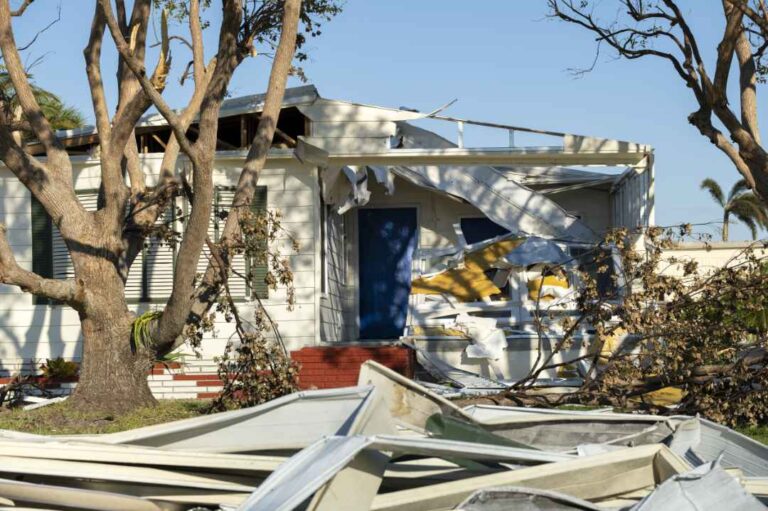Beyond the Roof – Documenting Your Personal Property After a Chicagoland Storm
When a severe storm sweeps through Chicagoland, bringing its fierce winds, hail, and torrential rain, our immediate thoughts often turn to the structural integrity of our homes – the roof, siding, and windows. However, the true impact of a storm often extends beyond the exterior, reaching into your living space and affecting your valuable personal property and belongings. From water-damaged furniture and electronics to soaked carpets and ruined irreplaceable keepsakes, personal property losses can be significant and emotionally taxing.
To ensure you receive a fair and comprehensive settlement from your homeowner’s insurance for these losses, meticulous documentation is not just helpful; it’s absolutely essential. Insurance companies require a detailed inventory of damaged items, and the more information you can provide, the smoother and more successful your claim will be.
At Seidel Exterior Group, we’ve been guiding Chicagoland homeowners through the entire storm damage claim process, including personal property losses, since 1970. While our primary focus is on exterior restoration, we understand that a complete recovery means addressing all aspects of your storm’s impact. This article provides a comprehensive checklist and template for creating a detailed inventory of your damaged personal property, helping you navigate this crucial task required by insurers and maximize your claim.
Why a Detailed Personal Property Inventory is Non-Negotiable
Trying to recall every damaged item and its value from memory after a stressful event is nearly impossible. A detailed inventory offers several critical advantages:
- Maximizes Your Claim: Ensures you don’t overlook any damaged items, which means you receive full compensation for all your covered losses.
- Speeds Up the Process: A well-organized inventory allows your insurance adjuster to quickly assess and value your claim, leading to faster processing and payment.
- Provides Proof of Ownership and Value: Strong documentation supports your claim, making it harder for the insurer to dispute the existence, condition, or value of an item.
- Supports “Replacement Cost Value” (RCV) Claims: If you have RCV coverage for personal property, a detailed inventory with purchase prices and photos will be crucial for recovering the full replacement cost (after initial ACV payment and submission of replacement receipts).
- Reduces Stress and Errors: Having a systematic approach in a stressful situation helps ensure accuracy and prevents you from forgetting important details.
Before You Start: Essential Preparations
- Prioritize Safety First: Ensure the affected areas are safe to enter. Be aware of electrical hazards, unstable structures, or mold growth. If there’s standing water, do NOT enter without professional advice.
- Contact Your Insurance Company: Notify your insurer about the storm damage to your structure and that you anticipate personal property damage. Get your claim number.
- Do NOT Discard Items Prematurely: Resist the urge to immediately throw away damaged items, especially high-value ones. Your insurance adjuster may want to inspect them. If you must remove items due to health hazards (e.g., mold, severe water saturation), document them thoroughly before removal.
- Gather Supplies: You’ll need:
- A smartphone or camera (for photos/videos)
- A notepad and pens
- A tape measure
- Plastic bags/markers (for small items or items needing to be sorted)
- Flashlight (for dim areas like closets)
- Existing home inventory (if you have one – this is where preparation pays off!)
Your Detailed Personal Property Inventory Checklist & Template
Go room by room, systematically documenting every damaged item. Be as thorough as possible.
Template Columns for Your Inventory (Use a Spreadsheet, App, or Notebook)
| Item Number | Room/Location | Item Description (Be Specific!) | Make/Model/Brand | Serial Number (if applicable) | Purchase Date (Approx. if unknown) | Original Purchase Price | Estimated Current Value (ACV) | Estimated Replacement Cost (RCV) | Description of Damage | Photo/Video Ref. | Receipts/Proof (Y/N, Notes) |
| 1 | Living Room | Samsung 65″ Smart TV (2022 model) | Samsung QN65QN90A | ABC123DEF456 | 05/15/2022 | $1,800 | $1,000 | $2,000 | Water damaged screen, no power | LR_TV_001.jpg, LR_TV_002.mp4 | Yes (Email Receipt) |
| 2 | Living Room | Fabric Sofa (3-seater) | Ashley Furniture | N/A | 03/2019 | $950 | $300 | $1,200 | Water stained, strong mildew | LR_Sofa_001.jpg | No (Cash purchase) |
| 3 | Bedroom 2 | Child’s Desk (Pine Wood) | IKEA | N/A | 11/2021 | $89 | $40 | $100 | Warped top, water rings | BR2_Desk_001.jpg | Yes (CC Statement) |
| … | … | … | … | … | … | … | … | … | … | … | … |
Export to Sheets
Detailed Steps for Each Item:
- Go Room by Room: Start in one room and work systematically. Don’t skip areas like closets, drawers, cabinets, or even the garage, basement, attic, and outdoor areas (patio furniture, grill, tools).
- Itemize Everything: List every single item that is damaged, no matter how small. For large categories like clothing, you might itemize by category (e.g., “5 pairs of jeans,” “10 t-shirts,” “3 pairs of athletic shoes”) and then estimate average value per item. For high-value items, list individually.
- Provide Detailed Descriptions: Be specific. Instead of “TV,” write “Samsung 65″ Smart TV, QLED, Model QN65QN90A.” Instead of “chair,” write “Fabric upholstered accent chair, blue, tufted back.”
- Include Identifying Information: Record make, model, brand, and especially serial numbers for electronics, appliances, and other high-value items. This proves ownership and helps in valuation.
- Note Purchase Date and Price: Even if approximate, provide the date you acquired the item and its original purchase price. This helps the insurer calculate depreciation if you have ACV coverage or for the initial payout on RCV policies.
- Estimate Current Value (ACV) & Replacement Cost (RCV):
- ACV (Actual Cash Value): What the item was worth just before the damage, accounting for age and wear. This can be challenging.
- RCV (Replacement Cost Value): What it would cost to buy a new, comparable item today. For RCV policies, you’ll eventually need receipts for actual replacements to get the full payout.
- Tip: Use online retailers (Amazon, Best Buy), recent sales, or even screenshots of similar items for sale (used for ACV, new for RCV) to help estimate.
- Describe the Damage Precisely: Don’t just say “damaged.” Describe how it’s damaged: “water stained,” “cracked screen,” “bent frame,” “mildew growth,” “burnt,” “shattered glass,” etc.
- Visual Documentation (Photos & Videos):
- Take Multiple Angles: Photograph each damaged item from several angles.
- Show Damage Clearly: Close-ups of the specific damage.
- Show Context: A photo of the item in its damaged location within the room provides context.
- Label/Date: Ensure photos are dated (most smartphones do this automatically). Consider labeling file names (e.g., “LR_TV_001.jpg”).
- Video Walk-Throughs: A video walk-through of each damaged room, narrating as you go, can be incredibly powerful. Pause on damaged items for close-ups.
- Proof of Ownership/Value (Receipts & Appraisals):
- Collect Receipts: Dig out old receipts, invoices, credit card statements, or bank statements for high-value items. Digital receipts (emailed from online purchases) are easiest to save.
- Appraisals: For jewelry, fine art, antiques, or collectibles, provide recent appraisals.
- Manuals/Original Packaging: These can also help prove ownership.
- “If no receipt”: If you don’t have a receipt, don’t panic. Photos/videos are still vital, and sometimes screenshots of online prices for comparable items, or even old photos of the item in your home, can serve as proof of ownership.
- Separate Categories for Special Limits: Be aware that most policies have sub-limits for certain categories of personal property, such as:
- Jewelry, furs, and precious stones (often $1,500 – $2,500)
- Cash, securities, and valuable papers
- Fine art, antiques, and collectibles
- Firearms
- Silverware
- Business property on premises
- Theft of certain electronics (e.g., laptops, tablets)
- If you have highly valuable items in these categories, you may need a “scheduled personal property endorsement” or “rider” on your policy for full coverage.
SEO Keywords: “Personal property inventory checklist Illinois,” “documenting damaged belongings for insurance Chicago,” “home inventory for insurance claim template,” “proof of ownership for insurance.”
Tips for a Smooth Personal Property Claim
- Be Meticulous, But Realistic: Don’t exaggerate values, as this is insurance fraud and can lead to claim denial. Be honest and factual.
- Use Technology: Consider using a home inventory app (like NAIC Home Inventory, Nest Egg, or HomeZada). Many allow you to take photos, scan barcodes, categorize items, and store receipts digitally. Even a simple spreadsheet (Excel/Google Sheets) is better than a handwritten list.
- Organize Your Documentation: Keep all your inventory lists, photos, videos, receipts, and communication logs in a single, organized folder (physical and digital backup).
- Communicate with Your Adjuster: Be responsive to your adjuster’s requests for information. If they ask for clarification or additional proof, provide it promptly.
- Don’t Clean Up Too Soon: As mentioned, avoid discarding items until your adjuster has had a chance to inspect them or has given you permission. If you must dispose of items, take thorough documentation first.
- Focus on Functional Loss: Remember the “functional vs. cosmetic” distinction. While you’ll list all damage, the insurer’s focus will be on items that are no longer usable or are significantly impaired.
- For RCV Policies, Keep Replacement Receipts: If you have Replacement Cost Value coverage for your personal property, you’ll need to submit receipts for replacement items to receive the full RCV payout (the recoverable depreciation). Buy comparable items, not necessarily upgrades, unless your policy allows it.
Why Seidel Exterior Group is Your Partner in Recovery
While our expertise lies in exterior restoration, we understand that a complete recovery after a storm means addressing all aspects of your damage. Our team can offer valuable guidance during your personal property claim process:
- Holistic Damage Understanding: We understand how exterior damage (like a roof leak) directly leads to interior damage to personal property. We can help you connect the dots for your insurer.
- Comprehensive Project Support: As we restore your home’s exterior, we can provide insights on coordinating with your personal property claim, ensuring structural repairs address the cause of interior damage.
- Trusted Resource: Having a reputable local contractor working on your exterior restoration can lend credibility to your overall claim, demonstrating you’re taking comprehensive steps to restore your property.
Conclusion: Your Preparedness is Your Personal Property Protection
Discovering damaged personal property after a storm in Chicagoland is disheartening. However, by taking a methodical approach to creating a detailed inventory, documenting everything thoroughly, and understanding what your insurance company needs, you can significantly streamline your claim and maximize your rightful settlement.
Don’t let the stress of the moment prevent you from taking these crucial steps. Your preparedness now will pay dividends in your peace of mind and financial recovery later.
Has your Chicagoland home recently suffered storm damage, impacting both its exterior and your personal belongings? Contact Seidel Exterior Group today for a free, comprehensive exterior inspection. While we focus on your roof, siding, and windows, we’re here to support you through the entire claims process, including advising on best practices for your personal property claim.



